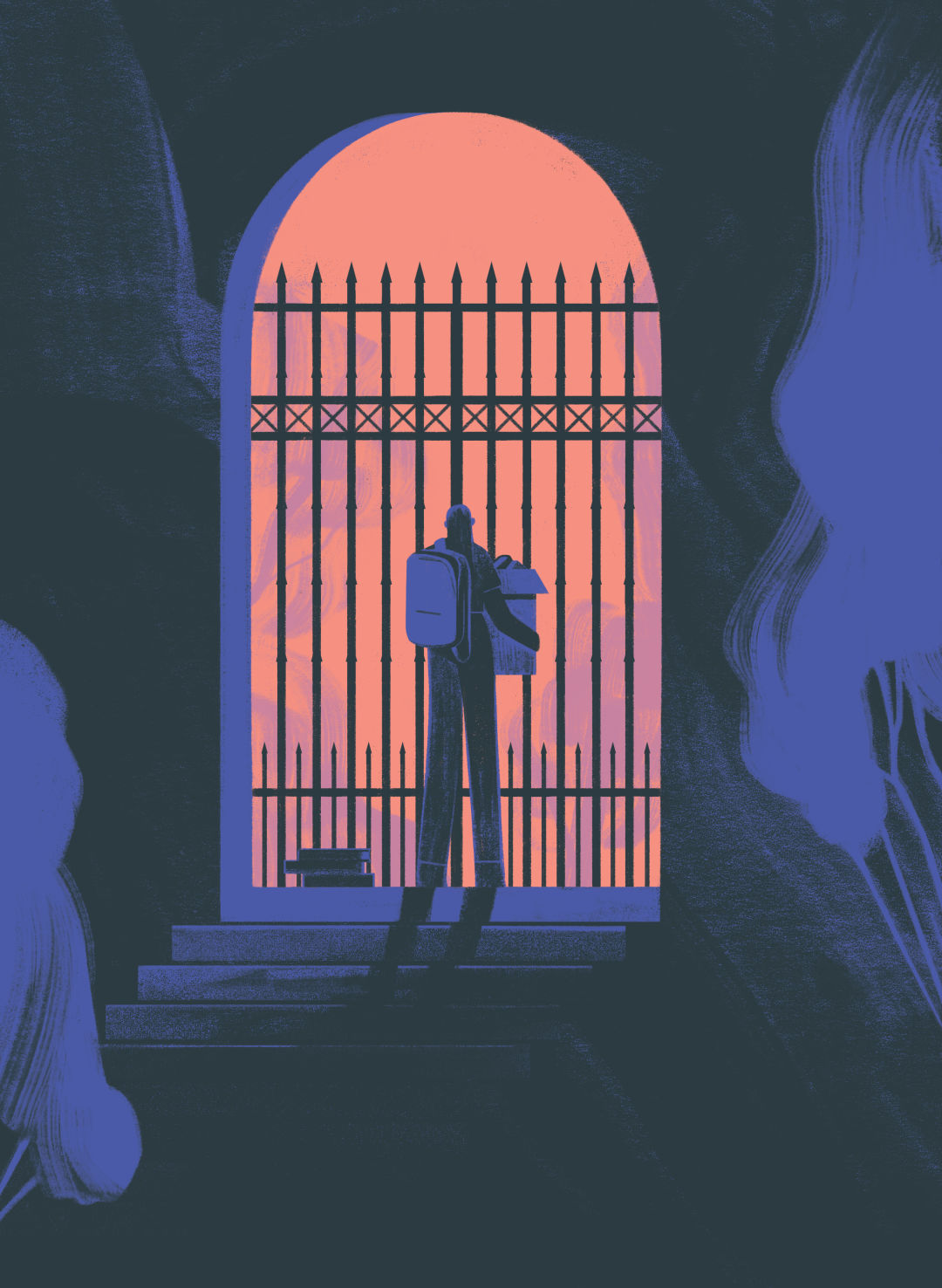Oregon Universities Are Facing a Sophie’s Choice When it Comes to Coronavirus

Funding for public universities only recently hit the pre-2008-recession level of state investment, and it continues to lag behind other states on a per-student basis, says Ben Cannon, executive director of the Oregon commission that guides higher education. Then, the pandemic blew a $2.7 billion hole in state’s overall budget.
Image: Sara Wong
Tecumseh Sanchez-Massengill, 19, used to feel like a poster child for higher education. Now he just feels beaten down.
A year ago, as he prepared to enter Oregon State University to study finance, he was a foster kid and the first in his bio-family to seek a four-year degree. Then came COVID-19. As wealthy classmates retreated to their parents’ homes, Sanchez-Massengill ditched his dorm and borrowed $870 from a friend to rent an apartment. A student on the honor roll, he tried to make a go of things.
Months later, his outlook has dimmed. Sanchez-Massengill applied multiple times for emergency grants for students via the CARES Act, but he never heard back from OSU administrators, he says. Professors asked for his patience as they navigated new technology, but they did not always extend the same courtesy as he navigated life in isolation with no parental pocketbook. His grades slipped.
Now, his financial aid package for fall has shrunk. And as the university prepares to resume on-campus operations, he’s not sure whether he can afford to return to school—if he wants to. “It’s very daunting,” he says. “I don’t want to go back into the dorms. I don’t think that they will be a safe environment to be in.”
Like Sanchez-Massengill, the nearly 70,000 undergrads who attend OSU, the University of Oregon, and other public universities statewide have spent the summer weighing whether and how to return to shared accommodations and classrooms at a moment when health experts cannot predict the exact path of the coronavirus.
Elsewhere, public universities have pledged to remain almost exclusively online, as within the California State system. But following suit here risks the very existence of higher education.
Funding for public universities only recently hit the pre-2008-recession level of state investment, and it continues to lag behind other states on a per-student basis, says Ben Cannon, executive director of the Oregon commission that guides higher education. Then, the pandemic blew a $2.7 billion hole in state’s overall budget.
Historically, legislators have ranked public universities below K–12 schools and social services on their lists of funding priorities, reasoning that they can fill funding gaps with tuition. But Oregon families are unlikely to be in position to pay more this year.
“The pandemic has created quite a bit of fiscal distress at all institutions,” Cannon says. “And that’s really all we’re able to see at this point.”
Many institutions can’t depend on higher tuition to save them, says Melody Rose, the last president of Marylhurst University, which closed in 2018. “Their costs can keep going up,” she says. “But the appetite for paying that price tag is evaporating, especially if the student population perceives that they are getting less for that money.”
Elite public and private institutions can draw on tremendous endowments, but most Oregon colleges and universities can’t, says Rose, who previously guided Oregon’s public university system. “We are collectively at an existential moment,” she says. “I’m glad not to be running a campus right now.”
Like OSU, the University of Oregon plans to operate with new restrictions, including socially distanced classrooms, fewer opportunities for mingling, the requirement that students and staff wear masks, and the continued reliance on online classes for lectures with more than 50 students.
Uncertainty is fueling further anxiety. Representatives for Oregon universities say they are only guessing how many students will even show up in the fall. Admitted high school students have until September 1 to tell OSU and UO whether they’ll enroll; typically, the deadline is May 1.
Diego Millan, a 20-year-old theater student at the University of Oregon, says he’s eager to return to campus.
“I work better in an environment driven by the college experience,” he says. “Being in school in a classroom will keep me super-focused in a way I can’t keep myself.”




